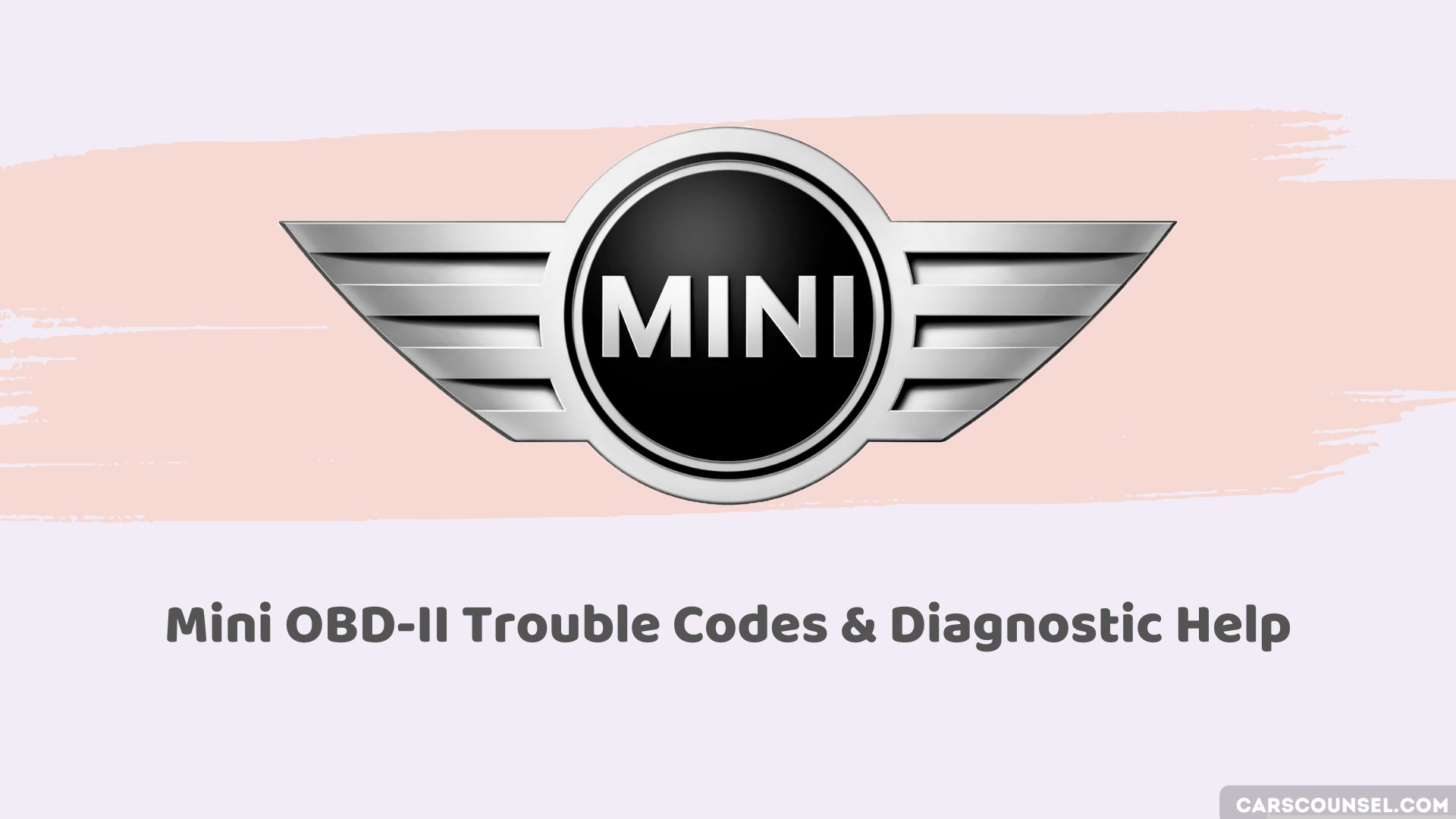You’re likely familiar with that dreaded check engine light, but did you know that it’s estimated to illuminate for over 10 million vehicles daily? When it does, it’s often due to a mini OBD/OBD2 code, a cryptic message from your car’s onboard computer system.
But what do these fault codes mean, and how can you decipher them to diagnose the problem? You’re about to find out the answers to these questions and more, starting with the basics of OBD-II codes and how to retrieve and interpret them.

Quick Navigation
Understanding OBD-II Codes
Your vehicle’s onboard computer system communicates with you using alphanumerical messages, known as OBD-II codes, which serve as a warning system for potential issues within its various systems.
These Diagnostic Trouble Codes (DTCs) are generated when the onboard diagnostics system detects a problem with a sensor, engine, transmission, or emissions system.
The check engine light on your dashboard illuminates when a code is triggered, signalling that it’s time to diagnose the issue.
With an OBD2 code reader, you can retrieve the specific code, which helps you pinpoint the problem and take corrective action.
Retrieving and Interpreting Codes
When you’ve identified an issue with your MINI vehicle, the next step is to retrieve the OBD2 code using a MINI-specific OBD2 scanner or a generic OBD2 scan tool.
You’ll find the OBD port location in your owner’s manual or by consulting a certified MINI specialist. Once connected, the scan tool will display the Diagnostic Trouble Codes (DTCs) stored in the electronic control unit.
Note both the letter and number combinations, as these indicate the system affected (e.g., powertrain, body, chassis, or network communication) and the specific issue within that system (e.g., O2 sensor, catalytic converter, position sensor, or EVAP system).
To interpret the codes accurately, you’ll need access to a MINI-specific code list or database, which will help you diagnose the problem and plan repairs.
Common Mini OBD-II Codes Explained
As you plunge into the world of MINI OBD-II codes, you’ll likely encounter a few common culprits that can help you pinpoint the source of the issue.
With an OBDII Code Reader, you can retrieve Diagnostic Trouble Codes that indicate specific problems. For instance, Engine Codes P0301 to P0304 point to misfires in cylinders 1 to 4, which can be caused by faulty Spark Plugs, ignition coils, or fuel injectors.
P0015 indicates a problem with the Camshaft position sensor or variable valve solenoid, affecting engine timing and performance.
P0420 suggests a faulty Catalytic converter, which a bad Oxygen sensor or rich Fuel System mixture can cause.
Most Common Mini OBD-II Trouble Codes
Powertrain (P) Codes
| Code | Description |
|---|---|
| P0010 | Variable valve timing actuator/PCM failure |
| P0011 | Camshaft timing/Variable valve timing system issue |
| P0171 | System Too Lean (Bank 1) |
| P0172 | System Too Rich (Bank 1) |
| P0190 | Fuel Rail Pressure Sensor Circuit Issue |
| P0201-P0204 | Injector Circuit Issues for Cylinders 1-4 |
| P0221-P0223 | Throttle/Pedal Position Sensor Circuit Issues |
| P0234 | Turbocharger Boost Pressure Too High |
| P0237-P0238 | Turbocharger Boost Sensor Circuit Low/High |
| P0335-P0336 | Crankshaft Position Sensor Issues |
| P0340-P0343 | Camshaft Position Sensor Issues |
| P0420 | Catalytic Converter Efficiency Below Threshold |
| P0440-P0442 | EVAP System Malfunction |
| P0500–P0501 | Vehicle Speed Sensor Issues |
| P0505-P0507 | Idle Control System Issues |
Body (B) Codes
| Code | Description |
|---|---|
| B0081 | Airbag System Issue |
Chassis (C) Codes
| Code | Description |
|---|---|
| C0040 | Wheel Speed Sensor/ABS Module Issue |

